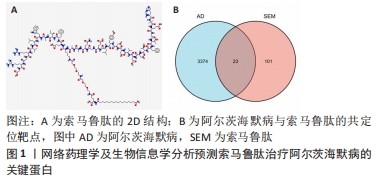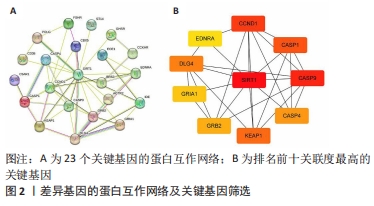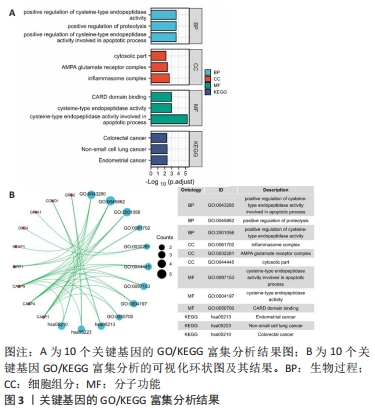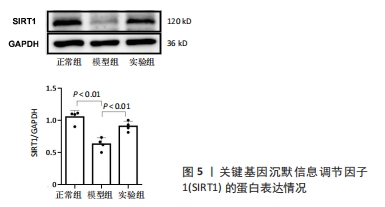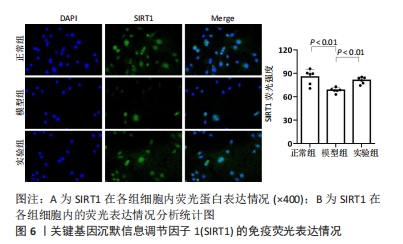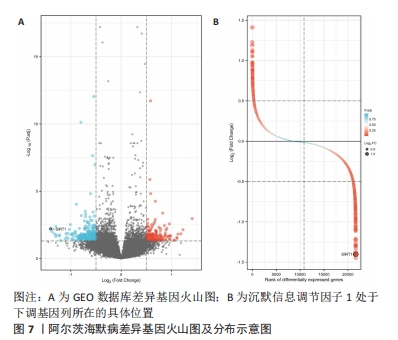中国组织工程研究 ›› 2024, Vol. 28 ›› Issue (20): 3235-3239.doi: 10.12307/2024.382
• 组织工程相关大数据分析 Big data analysis in tissue engineering • 上一篇 下一篇
索马鲁肽治疗阿尔茨海默病的潜在靶点:沉默信息调节因子1
柴世凡1,李欣儒1,叶育采1,孙俊丽2,蔡红艳3,王昭君1
- 山西医科大学,1基础医学院生理学系,细胞生理学教育部重点实验室,细胞生理学山西省重点实验室,2麻醉学院,3基础医学院微生物与免疫教研室,山西省太原市 030000
Silent information regulator 1: A potential target of semaglutide in the treatment of Alzheimer’s disease
Chai Shifan1, Li Xinru1, Ye Yucai1, Sun Junli2, Cai Hongyan3, Wang Zhaojun1
- 1Department of Physiology, School of Basic Medicine, Shanxi Medical University; Key Laboratory of Cell Physiology, Ministry of Education; Shanxi Key Laboratory of Cell Physiology, Taiyuan 030000, Shanxi Province, China; 2School of Anesthesiology, 3Department of Microbiology and Immunology, School of Basic Medicine, Shanxi Medical University, Taiyuan 030000, Shanxi Province, China
摘要:
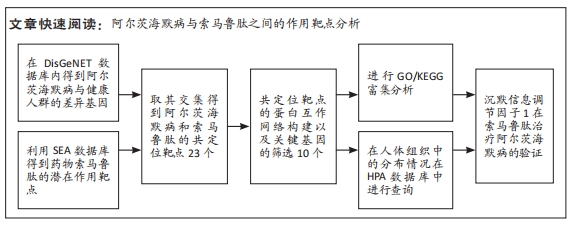
文题释义:
阿尔茨海默病:是一种慢性不可逆的神经退行性疾病,是目前最常见的痴呆类型,其病理特征包括大量β-淀粉样蛋白积聚形成的老年斑、过度磷酸化的tau蛋白聚集形成的神经原纤维缠结和大量神经元的丧失,最终形成脑萎缩。根据其病理过程进展分为无症状的临床前期、轻度认知功能障碍期和有明显认知功能障碍的临床期。沉默信息调节因子1:是一种高度保守的NAD依赖性脱乙酰酶,属于去乙酰化酶家族最突出和最广泛研究的成员,是一种翻译后调节因子,通过脱乙酰化多种蛋白质(包括组蛋白和非组蛋白)影响多种生物过程,与健康寿命和寿命密切相关,目前在肿瘤、炎症、老化、自噬等领域研究广泛。
背景:研究发现胰高血糖素样肽1及其类似物具有显著的神经保护作用,并且已有部分药物应用到阿尔茨海默病临床三期研究阶段,然而其发挥神经保护作用的具体机制尚不明确,有待进一步探讨阐明。
目的:拟通过生物信息学和网络药理学分析方法筛选出阿尔茨海默病发病机制的相关基因,以及索马鲁肽(一种胰高血糖素样肽1受体激动剂)治疗阿尔茨海默病的相关靶点,对两者进行综合分析挑选出潜在靶点基因,并在细胞水平加以验证。方法:利用DisGeNET数据库筛选出阿尔茨海默病患者与健康人群的差异基因,利用PubChem在线数据库得到索马鲁肽的化学结构式和2D结构图,利用DAVID在线数据库进行GO/KEGG富集分析,利用STRING数据库进行蛋白互作网络的构建,利用HPA数据库判断目的蛋白在人体各组织中的分布特点,最后使用蛋白印迹技术和免疫荧光技术检测索马鲁肽干预HT22细胞之后的蛋白表达情况。
结果与结论:①利用DisGeNET数据库内数据得到3 374个阿尔茨海默病患者与健康人群的差异基因,同时获得索马鲁肽潜在药物的101个靶基因,取两者交集得到23个相关基因;结合蛋白互作网络从中筛选出10个关键基因,分别是沉默信息调节因子1(SIRT1)、CASP9、CCND1、CASP1、KEAP1、DLG4、CASP4、GRB2、GRIA1、EDNRA;②GO基因功能分析显示关键基因主要富集在:半胱氨酸型内肽酶的正向调节活动,蛋白溶解的正向调节,半胱氨酸型内肽酶的正向调节,涉及凋亡活动过程的细胞质部分,AMPA谷氨酸受体复合物,炎症复合物,CARD结构域结合,半胱氨酸型内肽酶活性,半胱氨酸型内肽酶活性参与凋亡过程;KEGG信号通路分析结果主要为:结直肠癌,非小细胞癌,子宫内膜癌,上述均与免疫浸润、炎症、自噬凋亡相关;此外,根据关键基因的关联度排名及在HPA在线数据库不同组织中的分布情况,挑选出最显著的差异基因为SIRT1;③细胞实验显示,SIRT1蛋白表达在β-淀粉样蛋白1-42干预后的HT22细胞中显著下调,而经过索马鲁肽处理后明显上升;④结果显示,SIRT1可能是索马鲁肽治疗阿尔茨海默病的靶点基因。
https://orcid.org/0000-0002-3642-8135(柴世凡)
中国组织工程研究杂志出版内容重点:组织构建;骨细胞;软骨细胞;细胞培养;成纤维细胞;血管内皮细胞;骨质疏松;组织工程
中图分类号:
